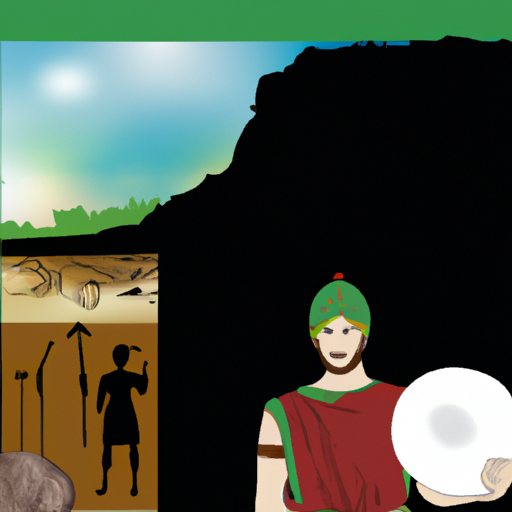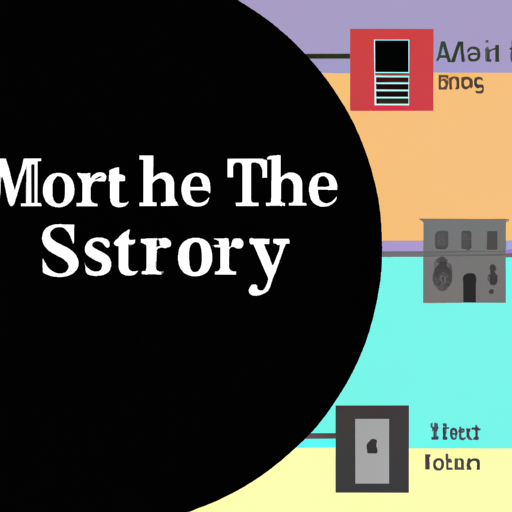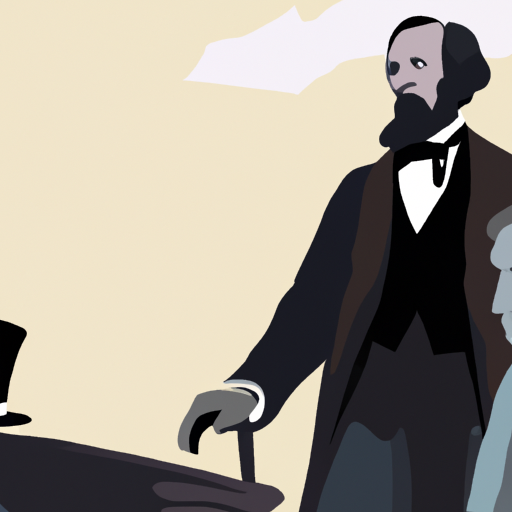History of the First People on Earth
Unearth the mysteries that lie beneath to uncover the very beginnings of humankind! Uncovering the truth can be a daunting task, but with a little bit of effort, you may just find yourself on the path to knowledge. So don your detective hat and start exploring the past to see who was at the dawn of man!

Questions of the past, left unanswered for so long, now beg to be explored. Are you ready to take the plunge and investigate the unknown? A world of secrets lies beneath the surface, just waiting to be discovered. Unearth the evidence that has been hidden away and piece together the puzzle of mankind’s beginnings. From fossils to artifacts, there is an abundance of clues out there that can help you uncover the truth. Embark on an exciting journey back in time as you search for answers and trace our species’ origins. With a bit of effort, your detective work could lead to a newfound appreciation of our collective history!
.
Introduction

For centuries, the source of humanity’s inception has been a source of contention among historians. Estimates from scientific research suggest that Homo sapiens arose in Africa around two hundred thousand years ago, and began to migrate out of the continent some seventy thousand years later. Travelling through Europe, Asia and eventually the Americas, these early humans left behind evidence that indicates they were hunter-gatherers dependent on tools and fire for survival. As they spread throughout the world, distinct cultures and languages formed over time, yet their origin remains an unsolved mystery.
– History of the First Humans on Earth
For aeons, Homo sapiens have been walking the Earth. Remnants of their existence, found in Morocco, suggest that they had been around for at least 300,000 years. Showing a likeness to modern humans in body proportion and skull shape, these early people began to migrate out of Africa about 70,000 years ago.
The discovery of tools and fire were pivotal moments in human development; tools enabled hunting and gathering while fire provided warmth during cold nights. As time went on, more complex technologies such as stone weapons and pottery vessels were invented.
Early societies were small bands or tribes that relied on nature for sustenance and spiritual beliefs. Over time, chiefdoms and kingdoms emerged in some areas as societies grew larger and more intricate.
Today, with archaeological excavations and genetic studies helping us unravel our past, we can only ponder what life was like for those ancient people who first stepped foot on this planet so long ago!
– The Evolutionary Path of Early Humans
The story of our species has been a convoluted and tumultuous one, filled with countless alterations over millions of years. It all began with the first hominid species, Australopithecus afarensis, which lived in Africa roughly 3.9 million years ago and was able to walk on two feet and had a brain slightly larger than a chimpanzee’s. Subsequent hominid species emerged from the australopithecines, such as Homo habilis and Homo erectus, who possessed bigger brains and utilized tools for procuring sustenance.
Centuries later, Homo sapiens appeared on the landscape; they spread around the world and developed language, artistry, as well as more complex tools for hunting. As societies became more intricate, so did technology; this eventually led to the emergence of agriculture around 10,000 years ago which enabled cities and civilizations to form.
It is evident that this evolutionary path has played an essential role in our history; without it we would not be where we are today. By examining this process we can gain insight into our place in history and how our ancestors managed to survive in a ever-evolving world full of obstacles.
– Ancient Migration Patterns of the First People on Earth
Mystifying the origins of humankind, it is believed that the first humans emerged in East Africa and spread out across the globe. Records indicate that this migration began around 100,000 years ago and as technology advanced, so did our ability to traverse greater distances with more ease. By 10,000 BC, humans had populated almost every corner of the planet except Antarctica and Australia.
The paths taken by these ancient migrants were unpredictable due to environmental conditions such as weather patterns and terrain. Some followed coastlines while others ventured inland along rivers or mountain passes. As time passed, these routes became more established with the development of better navigation tools.
The exchange of culture between different groups was essential for human civilization’s growth; it enabled us to build upon previous discoveries instead of having to start from scratch each time something new was invented. This impact can still be seen today in many forms including DNA analysis which can trace our ancestry back thousands of years. Gaining an understanding of these migratory paths provides insight into how our ancestors adapted to their environment and how they shaped our modern world.
– Archaeological Evidence for the Earliest Human Settlements
The exploration of our human narrative is often based on archaeological evidence, which can provide us with an abundance of knowledge about the earliest known settlements. These artifacts may range from stone tools to pottery and other objects used by early humans. In addition to these items, archaeological evidence can also include remains such as bones and other organic materials that have been preserved over time. Through the examination of these artifacts, experts are able to gain more insight into how early civilizations lived and interacted with one another.
To determine the age of an artifact or site, archaeologists often employ radiocarbon dating. This method takes advantage of the radioactive decay of carbon-14 to estimate when a material was last alive or in use. Radiocarbon dating has enabled archaeologists to pinpoint dates for some of the oldest known human settlements across the globe.
Stratigraphy is also used by researchers to understand how different layers of soil relate to each other and how they were formed over time. This allows us to gain a better understanding of how distinct cultures interacted with one another, as well as how environmental changes may have impacted their development throughout history.
By studying archaeological evidence, scientists are able to gain a better understanding of our past and how it has shaped our current societies today. Through this research we can learn more about our ancestors and their lives, helping us appreciate our own history even more profoundly.
– Cultural Impact of the First People on Earth’s History
For millennia, humanity has been shaped by the influence of those who were first to inhabit the Earth. From their migrations and settlements to their spiritual beliefs and cultural practices, the impact of these ancient civilizations can still be felt throughout the world today.
From Africa to the Americas to Asia, evidence of human activity dates back as far as 200,000 years ago when Homo sapiens first appeared. As they spread across the globe, they encountered other groups of humans who had also been migrating and settling in various regions. This intermingling of cultures created a unique blend of customs that remain present in many parts of the world.
The First People were responsible for introducing new technologies such as agriculture, pottery-making, and metalworking which have had a lasting effect on our lives today. They also developed complex systems of government, religion, and trade which formed the basis for many modern societies.
Of particular importance is the language that was passed down from these early civilizations. Thousands of distinct languages are traceable back to these ancient peoples and offer us an invaluable window into our shared past.
The legacy left behind by the First People is one that continues to shape our lives today in countless ways from language to technology to culture itself. Without recognizing their contributions it would be impossible to fully understand how we got here or where we are going next.
conclusion

Mystifyingly, it appears that the dawn of humanity began in Africa some two hundred thousand years ago. Subsequently, these early people spread out from their original homeland, populating other regions and ultimately resulting in the immense variety of cultures and populations that we observe today.
.
Some questions with answers
1. Who were the first people on earth?
The first people on earth are believed to have originated in Africa about 200,000 years ago.
2. What is the source of this information?
This information is based on archaeological evidence and fossil records.
3. How did they live?
The early humans lived as hunter-gatherers, surviving off the land by hunting animals and gathering plants for food.
4. How did they evolve over time?
Early humans evolved over time by developing tools and technology that allowed them to survive in a variety of environments. They also developed language and other forms of communication.
5. What is the significance of this history?
This history is significant because it provides insight into how our species has evolved over time, and how we have adapted to changing environments. It also helps us understand our place in the world today.





